
Thomas W
-
Posts
788 -
Joined
-
Last visited
-
Days Won
3
Content Type
Profiles
Forums
Blogs
Gallery
Events
Store
Posts posted by Thomas W
-
-
By the way, can anybody tell me the battalion that Garde Pionier Ernst Gorontzi was in? Would he be on a Rangliste by any chance?
0 -
He fathered six children and lived to be 64, so he was pretty much a miracle man anyway.
0 -
Coughed or puked, it's still disgusting.
0 -
Garde Pionier Ernst Gorontzi
Infanterie Geschoss in der rechten Lunge. Nach 14 Monaten kotzte er ein Stück Hosenträger aus von 2,5 cm
Zimmermann. Durch Kriegsbeschädigten-Schule in die Baufach Laufbahn. Preisgekrönte Baupläne zur Verwundeten-Ausstellung 1915 Weihnachten Elberfeld
links: letztes Bett.
Garde Pionier Ernst Gorontzi
Gorontzi was shot by a rifle bullet in the left lung and after 14 month he puked a piece of his suspenders (size 2.5 cm).
Gorontzi, a Carpenter in civilian life, trained in 1915 at a War-Wounded School to become an architect. His building plans were awarded prizes at the wounded exibition in Elberfeld. Christmas 1915
His bed was the last on the left
Thanks so much for that. What a strange, disgusting message!
0 -
-
Can anybody tell me what this says? I'd especially like to know the guy's name. Thanks.
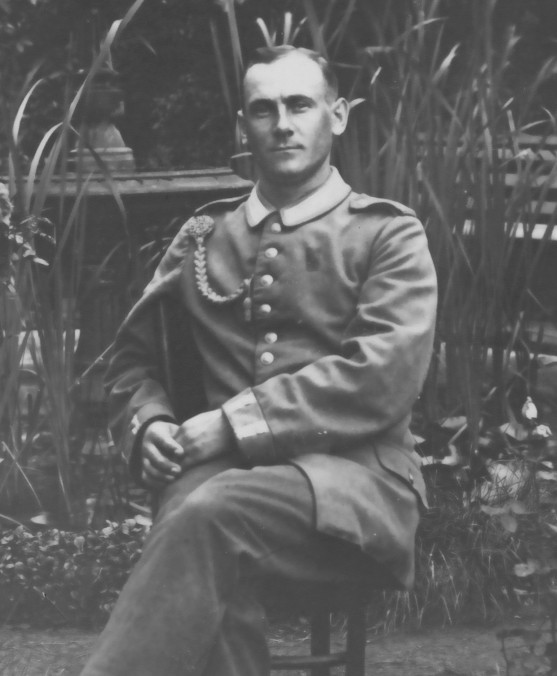 0
0 -
I wonder if they were used as a kind of "tunnel rat" in the trenches..... After some time in some underground tunnels in Verdun/Argonne, I see the need for Vertically challenged soldiers....
The top photo is of drivers of Trench Mortar Company 228, so that poor little fella would've had to have been given a pony. The unit in the bottom photo is unidentifieable, but the brassards say "_ _ _ _ _ _ Bat." and those guys are Saxon. The tunnel rat is Prussian, so maybe the Saxons thought it would be a yuck to have Hansi from an adjoining unit pose with them on a big old dud shell. They all look pretty grim, though, don't they?
"Now we joke, but remember to smile make not, ja?"
0 -
Turns out that smoking really does stunt your growth!
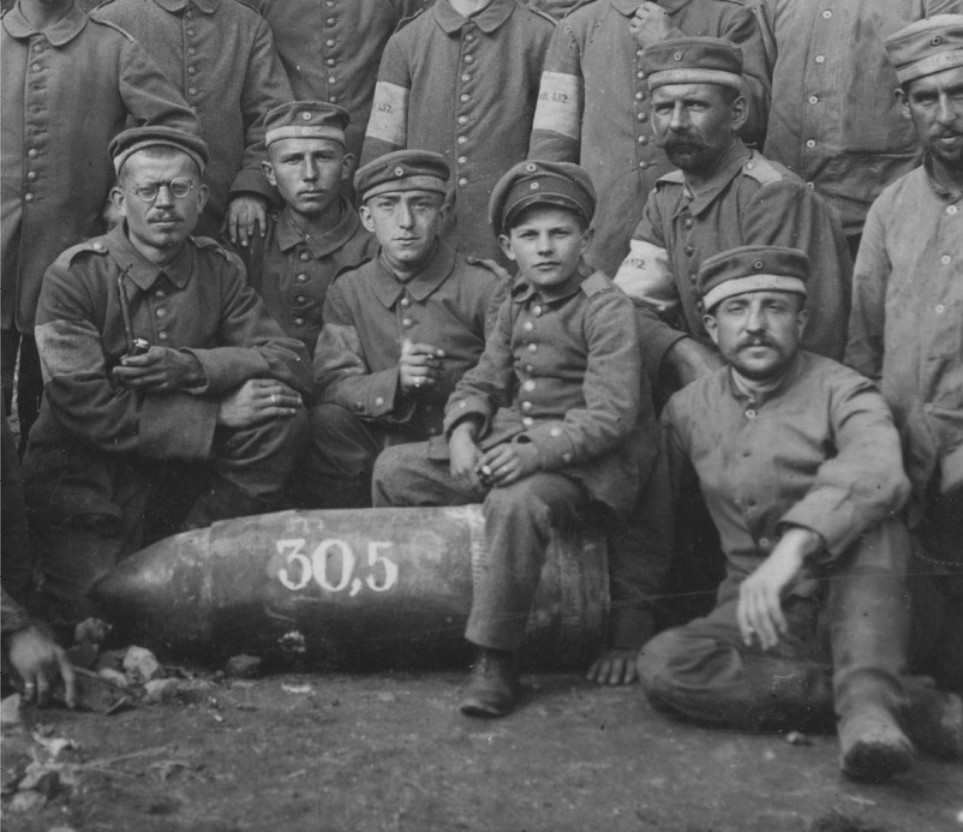 0
0 -
In Crocodile Dundee voice: "That ain't short. This is short."
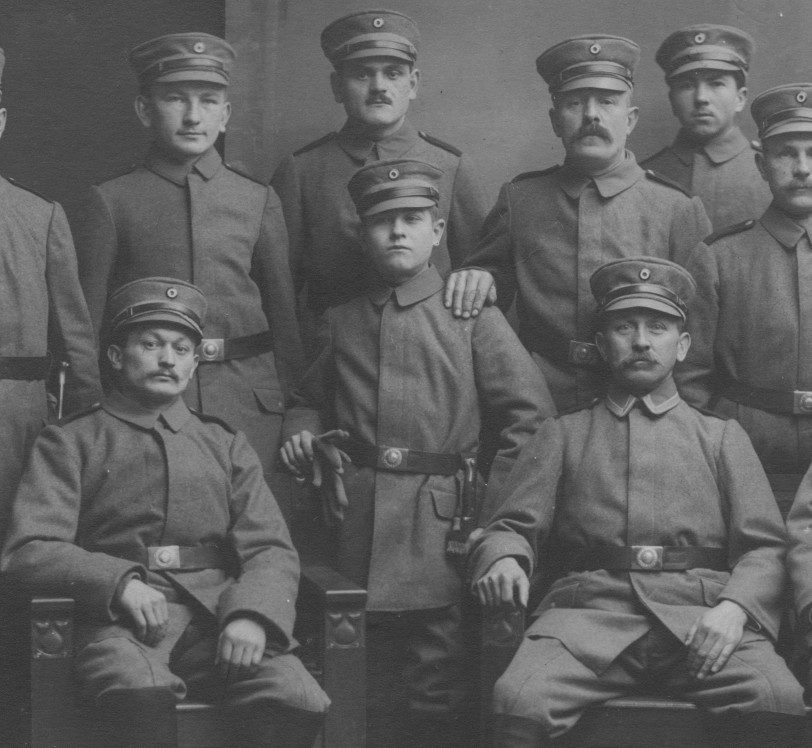 0
0 -
What was the role of these pilots? Battlefield observation? What types of planes would they fly?>
Halberstadt CL.II and CL.IV; Junkers J.I and CL.I; AEG J.I and J.II; Hannover CL.II and CL.IIIa; Albatros J.I and J.II.
The AEG and Albatros J-class aircraft had machine guns mounted in the observer's cockpit that fired downward at an angle of 45 degrees. Some AEG J.II's had up to six machine guns in the rear cockpit for trench strafing. The name Schutzstaffel means "Protection flight"; they were assigned to artillery observation planes to protect them. Later they were redesignated Schlachtstaffeln or "Battle Flights," which engaged in infantry-contact patrols and ground attacks. In this role they were armed with aerial grenades, hand grenades, light bombs, and multiple machine guns.
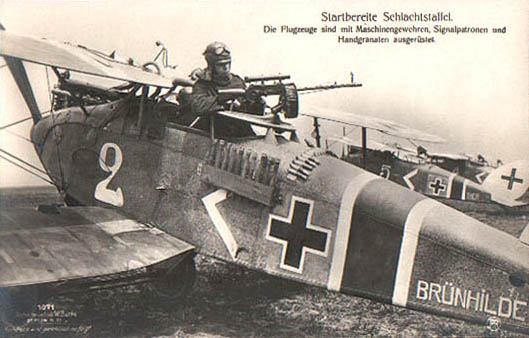
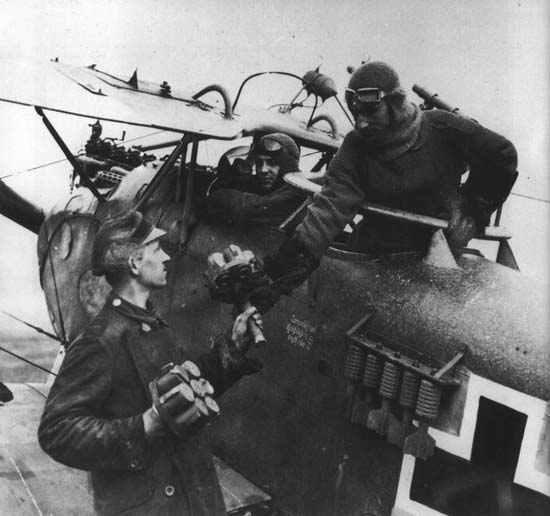
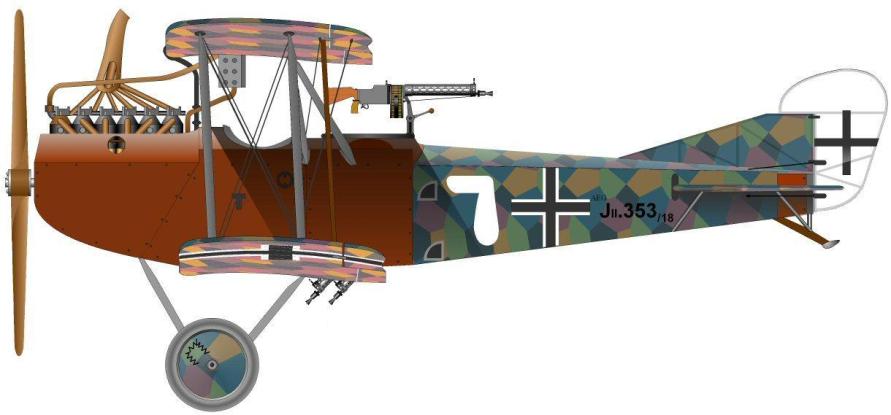 0
0 -
He's a member of a Schutzstaffel or Schlachstaffel, one of the ground-attack units. Rick Duiven and Dan-San Abbott's book Schlachtflieger! lists many Pioniere who were pilots. For example, Pionier Gottfried Weber was a pilot for Prussian Schutzstaffel 16; Pionier Ludwig Grünwald was a pilot for Bavarian Schutzstaffel 22; Pioniere Georg Fink and Friedrich Meyer were pilots for Bavarian Schutzstafel 23; Pionier Friedrich Wilhelm Mayr was a pilot for Bavarian Schutzstaffel 24, and so on.
1 -
His name is Joe, and he stands on the right. The photo was taken in Ochtendung. The handwritten notation on the back reads:
"My Buddy Joe during the World War, near where he got 9 machine gun bullet wounds, shrapnel, liquid fire, and mustard gas resulting to[sic] 9 months in a French hospital."
I think Joe's friend meant "My buddy Joe, who was my friend during the World War," because U.S. troops got nowhere near Ochtendung during the war, did they? This has to be a postwar photo.
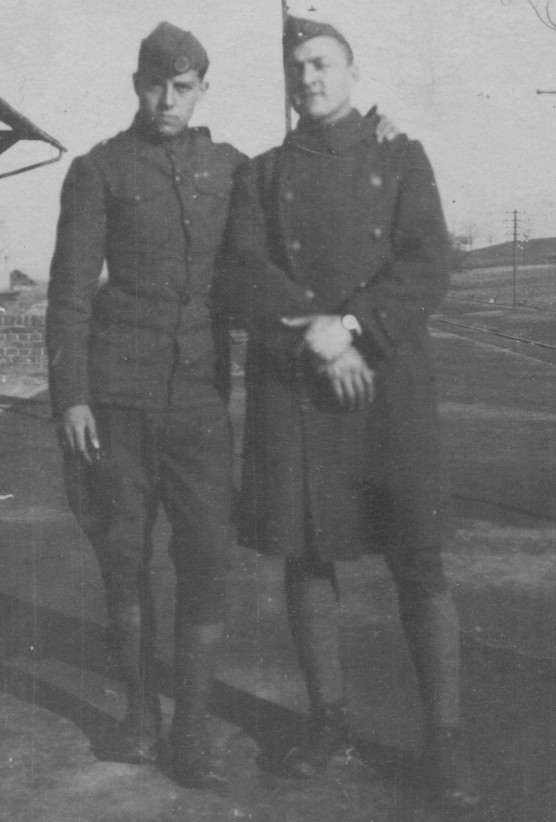 0
0 -
Pionier Faschinski, Pionier-Bataillon Nr. 20, in Metz, 1917.
 0
0 -
Here is a grouping of insignia representing the Garde Reserve Pionier Regiment. The Kragenlitzen on the top are for the M07/10 simplified tunic and the lower pair are for the Bluse. The shoulder straps are M1915 examples from Garde Pionier units.
Chip, I have dozens of photos of flamethrower pioneers, and in every one, the Litzen on the simplified tunics appear to be white rather than gray. Could you cite for me the regulation that calls for them to be gray?
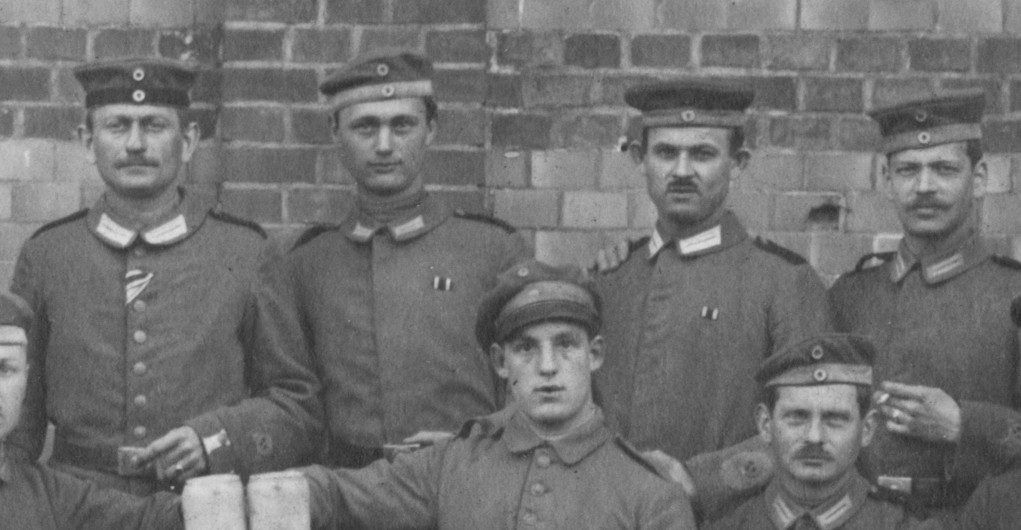 0
0 -
Here we go:
In the top left corner: "Baldiges Wiedersehen" (will see you soon)
Nisch, August 30, 1916
My dear Ella
Today I received the pretty card with your picture on it - it made me very happy and I thank you very much for it. I send you in return a picture of my comrades and me. It is not a good picture since there are no trained photographers here. Not sure when I get leave, hope soon. What is said at home in regard to my declaration of war, my dear Ella? (Was sagt man zu hause zur meiner Kriegserklärung, liebe Ella?) Thousand greetings and kisses from your Walter.
Thanks very much. I appreciate it.
0 -
So they are in Serbia. Running around with those Kolonial hats. I didn't know they used them in that theater. Good to note that.
Here's a Web site that says the colonial hat was common on the Macedonian front. I had no idea.
http://www.germancolonialuniforms.co.uk/
0 -
It's a German tank helmet.
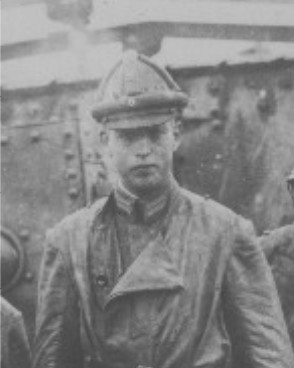
 0
0 -
Here's the writing. Any clues on where the men are stationed or the unit?
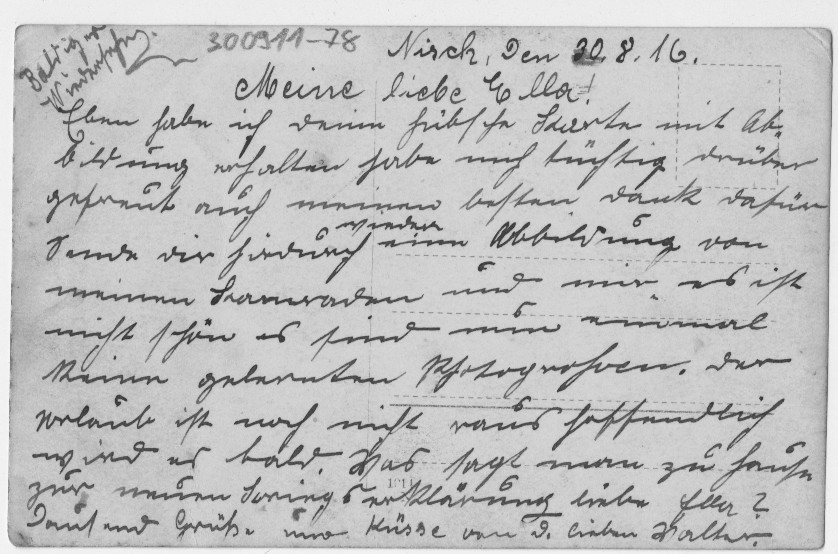 0
0 -
-
Pionier-Bataillon Nr. 20 attacked Fort Vaux with Brandröhre (not flamethrowers) on June 2, 1916. The unit had been parceled out the night before and could not dispatch a unified task force against the fort. Men armed with Brandröhre joined with men of Infantry Regiment No. 158 and, led by Lt. d. Res. Ruberg of the 1st Reserve Company, Pionier Bataillon Nr. 20, attacked the northwestern gallery. At the start of the battle in February, the 2nd Reserve Company of Pionier-Bataillon Nr. 20 was in the Corps Reserves of the III Army Corps. The target was Herbebois. The Staff of the 2nd Battalion, and the 2nd, 3rd, and 1st Reserve Companies of Pionier-Bataillon Nr. 20 were Corps reserves for the XVIII Army Corps. The target was Caures Wood.
0 -
The sculptor captured almost every detail of uniform and equipment accurately, but he put them all together in a way that is simply never happened in the real world. What a shame.
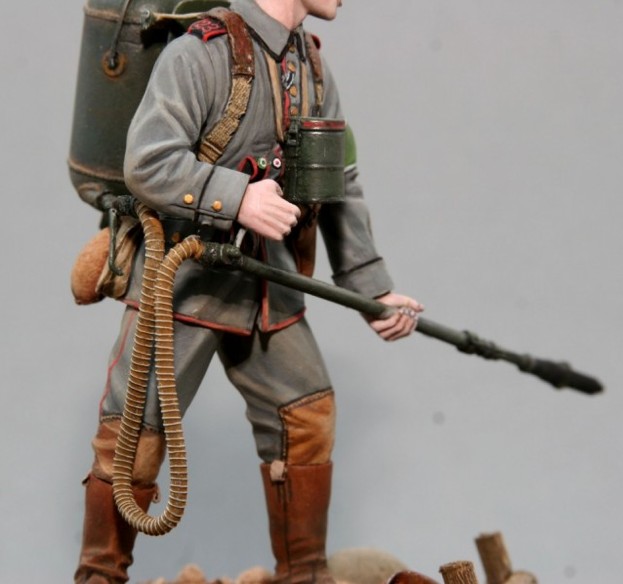 0
0 -
Finally, his flamethrower is a mishmash of the Kleif M.1916--which had the oil-pressurization tube on the left side--and the Kleif M.1917, which had the tube on the right side. The flamethrower in this model has oil-pressurization tubes on both sides, and the operator is using it by himself, which wasn't done. The Kleif were always operated by a three-man squad.
Also, the operator is holding the oil-release valve of the lance open, which means he's fired all his oil, but the detonator cap is still present on the end of the igniter. If all the oil had been fired, the detonator would have been ejected and the end of the igniter would be open, like a cardboard tube.
Such a great model, but inaccurate on almost every level. It probably only matters to me, but this is the equivalent of the scene in the The Alamo where one of the Mexican soldiers is wearing Keds high-top sneakers.
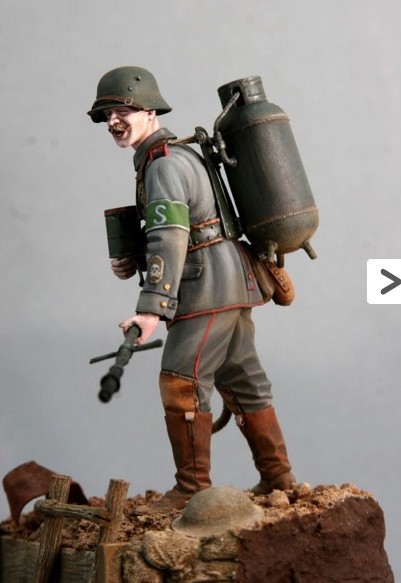 0
0 -
The man is depicted as being a Saxon, but his shoulder straps are painted as Pionier-Bataillon Nr. 23, a West Prussian unit. He also wears the brassard of the Assault Company of the 23rd Reserve Division, along with the death's-head sleeve badge of the Garde-Reserve-Pionier-Regiment. The assault company didn't have its own flamethrower operators; the man is also wearing a black wound badge, even though the kit says it depicts a soldier during the battle of the Somme in 1916.
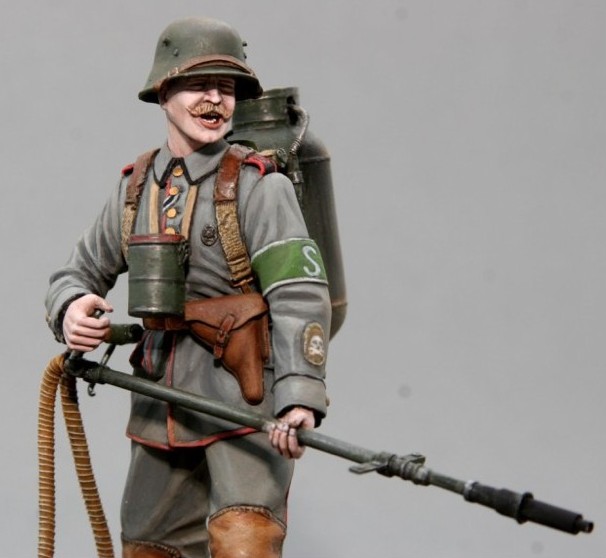 0
0 -
A Russian company has recently put out a resin figure in 120mm, depicting a flamethrower operator. The sculpting and detail are great, but it's hopelessly inaccurate.
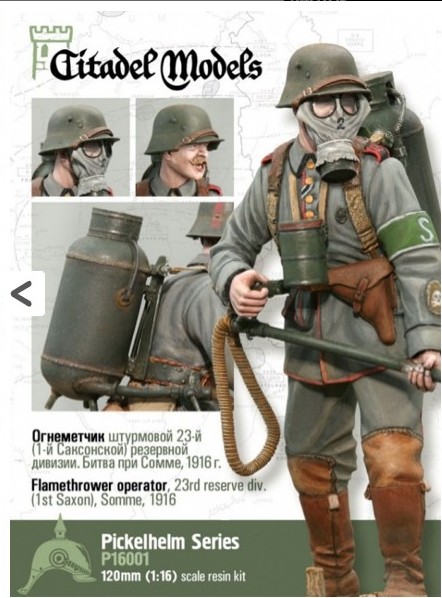 0
0




Question about Field Artillery Regiments
in Germany: Imperial Uniforms, Headwear, Insignia & Personal Equipment
Posted
Were German field artillery regiments organizied into detachments (Abteilungen) or battalions?